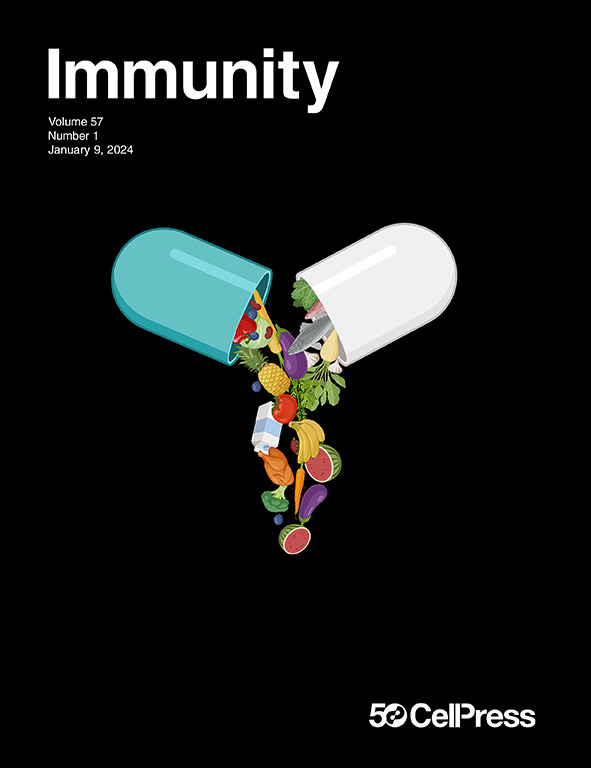Vaccination of nonhuman primates elicits a broadly neutralizing antibody lineage targeting a quaternary epitope on the HIV-1 Env trimer
IF 26.3
1区 医学
Q1 IMMUNOLOGY
引用次数: 0
Abstract
The elicitation of cross-neutralizing antibodies to the HIV-1 envelope glycoprotein (Env) by vaccination remains a major challenge. Here, we immunized previously Env-immunized nonhuman primates with a series of near-native trimers that possessed N-glycan deletions proximal to the conserved CD4 binding site (CD4bs) to focus B cells to this region. Following heterologous boosting with fully glycosylated trimers, we detected tier 2 cross-neutralizing activity in the serum of several animals. Isolation of 185 matched heavy- and light-chain sequences from Env-binding memory B cells from an early responder identified a broadly neutralizing antibody lineage, LJF-0034, which neutralized nearly 70% of an 84-member HIV-1 global panel. High-resolution cryoelectron microscopy (cryo-EM) structures revealed a bifurcated binding mode that bridged the CD4bs to V3 across the gp120:120 interface on two adjacent protomers, evading the proximal N276 glycan impediment to the CD4bs, allowing neutralization breadth. This quaternary epitope defines a potential target for future HIV-1 vaccine development.

非人灵长类动物的疫苗接种引发了一种广泛中和的抗体谱系,靶向HIV-1 Env三聚体上的一个四级表位
通过疫苗接种引发HIV-1包膜糖蛋白(Env)交叉中和抗体仍然是一个主要挑战。在这里,我们用一系列接近天然的三聚体免疫先前经过env免疫的非人灵长类动物,这些三聚体在保守的CD4结合位点(CD4bs)附近具有n -聚糖缺失,从而将B细胞聚焦到该区域。用完全糖基化的三聚体异种增强后,我们在几种动物的血清中检测到tier 2交叉中和活性。从早期应答者的env结合记忆B细胞中分离出185个匹配的重链和轻链序列,确定了一个广泛中和的抗体谱系LJF-0034,它中和了84个HIV-1全球小组中近70%的成员。高分辨率冷冻电镜(cro - em)结构显示了一种分叉的结合模式,该模式通过两个相邻原蛋白的gp120:120界面将CD4bs桥接到V3,避免了近端N276聚糖对CD4bs的阻碍,从而允许中和宽度。这种四元表位确定了未来HIV-1疫苗开发的潜在靶标。
本文章由计算机程序翻译,如有差异,请以英文原文为准。
求助全文
约1分钟内获得全文
求助全文
来源期刊

Immunity
医学-免疫学
CiteScore
49.40
自引率
2.20%
发文量
205
审稿时长
6 months
期刊介绍:
Immunity is a publication that focuses on publishing significant advancements in research related to immunology. We encourage the submission of studies that offer groundbreaking immunological discoveries, whether at the molecular, cellular, or whole organism level. Topics of interest encompass a wide range, such as cancer, infectious diseases, neuroimmunology, autoimmune diseases, allergies, mucosal immunity, metabolic diseases, and homeostasis.
 求助内容:
求助内容: 应助结果提醒方式:
应助结果提醒方式:


